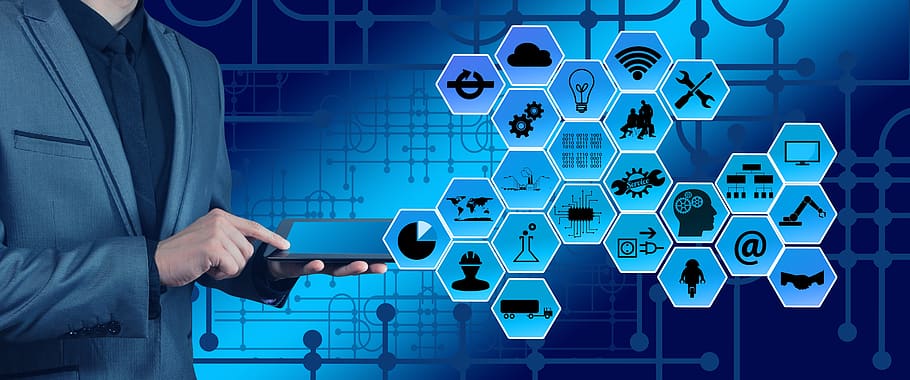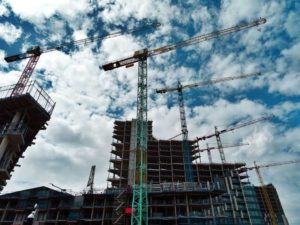Not too long ago, 24-7 active monitoring with high-tech cameras was still just a fantasy in the minds of stressed out business and property owners.
Now, with AI and machine learning that gets smarter as it goes, it looks like technology will continue to make remote video surveillance and monitoring even more effective and efficient.
Let’s take a quick look back at some of the most important landmarks that brought us to where we are today, before looking forward to the future of video surveillance and security.
1930’s
Mini portable cameras such as the Univex 8mm come onto the scene, with applications in modern warfare as the first handheld, covert surveillance camera.
1940’s
In 1942, Closed Circuit Television (CCTV) is developed and first used in Germany to monitor V2 rocket launches, and later, in the U.S. during A-bomb testing.
1950’s
In 1951, the Video Tape Recorder (VTR) enables live video recording from TV cameras through a magnetic recording strip. In the mid-50s, this technology is combined with CCTV to make it possible to view surveillance video after the initial recording is made.
1960’s
By the mid-60s, public surveillance becomes more widespread and CCTV is actively adopted by a number of police departments. In 1969, Marie Van Brittan Brown develops what would become the first home video security system.
1970’s
CCTV begins to be used in other industries beyond government and military, including banks and retailers that use the system as a security measure against theft. 1976 sees the release of charge-coupled device (CCD) technology that makes it possible for cameras to film in low light. Together with microchip technology, 24/7 surveillance becomes a reality.
1990’s
The first “Nanny Cam” is invented, allowing for small, high-resolution cameras to be used inside the home. In 1996, the first IP camera hits the market. This camera is the first of its kind and utilizes computer networks to send and receive information, marking the eventual transition to webcams and the ultimate decline of CCTV.
2000’s
The digital era begins in earnest, as portable HD cameras, DVR and cloud technology advances. Forward-thinking tech companies begin to work toward realizing the benefits of artificial intelligence and machine learning capabilities.
Video Surveillance & Monitoring Today
The internet, wireless broadband and cloud technology now make it possible to use video surveillance and live video monitoring just about anywhere, from car dealerships and huge warehouses to construction sites and oil and gas refineries, to name just a few.
Smart cameras are changing the game with proactive remote video monitoring, and making it possible for businesses and owners to keep their properties and assets safe with airtight security, 24/7, 365 days a year. You no longer only have the option to use security cameras to solve crimes after the fact. Now you can use a surveillance and monitoring system to detect and deter crime before it takes place.
Why should all of this matter to you? Because theft, vandalism, project delays and replacing stolen equipment costs a lot of money, and in the worst cases, causes a hit to your reputation that you may never be able to recover from.
The good news is that there are now airtight surveillance solutions that can be used in both fixed and mobile settings.


Artificial Intelligence & Machine Learning
There may have been a time when putting up a fence and installing security cameras was the best option for business security, but those days are long gone. AI gets smarter as it goes and can analyze tons of information, detect threat levels and take immediate action on things that would typically require a human being.
AI vastly improves security because it’s trained to detect and deter crime. The most effective surveillance and remote video monitoring solutions identify, track and evaluate security threats within seconds, and cut way down on false alarms, which also cost money (in fines) and a lot of unnecessary hassle.
AI also allows you to customize your surveillance and security to work how you want. Answer a few questions about your areas of concern, and your security team will program the system accordingly. You can have the system personalized so that your security monitoring team gets precise alerts for the suspicious activities that are most relevant to you and your business.
AI and machine learning make it possible to detect and deter crime, before reaching the level of dispatching authorities when necessary. It can also help monitor workplace and employee compliance to make sure best practices are followed even when you’re not there. Heck, AI can even detect and mitigate health risks, such as monitoring for proper social distancing or detecting if people are wearing a face mask.
What Does the Future of Remote Video Monitoring Look Like?
Honestly, it kind of looks like a science fiction movie. Some predict “invisible” surveillance cameras that can be hidden in plain sight. Think of a drone camera that is made to mimic the look of a hummingbird or dragonfly. Yes, it’s that science fiction-y.
Or even crazier, be on the lookout for smart dust and other nanoparticles that function as a receiving device for surveillance and security.
There’s a certain cool factor to these innovations, but the fact remains that today’s smart cameras and remote video monitoring capabilities are detecting and deterring crime at a high rate, and bringing a next-level peace of mind to those responsible for protecting important properties and assets.
Pro-Vigil is a national leader in smart video security solutions. We offer affordable solutions for companies seeking to mitigate their security risk. Contact us today to learn more about securing your site with state-of-the art remote video monitoring.









